
Animal House
Robotically fabricated habitats for endangered species
The ambition of this seminar was for students to conceptualize, digitally simulate, and then prototype a full scale synthetic habitat designed to aid in the survival of an endangered animal species. The design of these survival ‘capsules’ drew from the behavior and physicality of the inhabiting species while considering concepts of habitation, protection, and insulation from the extreme environments/threats these animals face.
Students developed a unique and highly controlled robotic fabrication process designed to suite the conceptual and aesthetic agenda of each project. Fabrication necessitated the use of a Staubli robotic arm, an industrial PLA extruder, and multiple digital techniques to produce a geometrically complex, high resolution prototype.
Students developed a unique and highly controlled robotic fabrication process designed to suite the conceptual and aesthetic agenda of each project. Fabrication necessitated the use of a Staubli robotic arm, an industrial PLA extruder, and multiple digital techniques to produce a geometrically complex, high resolution prototype.
Project 1 Description: Habitat for the Little Brown Bat
Little Brown Bats are considered endangered with a population loss of approximately 90%. This is partly because they choose to live in caves that are usually filled with moisture leading them to get White-Nose Syndrome killing over one million brown bats since 2006. The disease is named for a distinctive fungal growth around the muzzles and on the wings of hibernating bats. It is caused by the fungus Pseudogymnoascus destructans, which colonizes the bat’s skin making them unable to breathe or fly. No obvious treatment or means of preventing transmission is known, and some species have declined more than 90% within five years of the disease reaching a site. The massing is used as a protection to keep predators from breaking into the enclosure easily; it is thickly layered, allowing little scope for brittleness or strain. Overlapping layers whose openings do not necessarily overlap would be ideal for this enclosure. Since the White Nose Syndrome is the major cause of bat deaths in the past five years, the enclosure should ideally be as watertight as possible, leaving little scope for moisture creep. To ensure that bat does not get a leg or a wing stuck in the surface of the enclosure, size of the openings should be minimal, but still allowing the required natural sunlight in. As an extra feature, luminescence of the enclosure can help the bat attract prey, since insects are attracted to bright light and color. We chose the Day Roost on a tree branch as our case for developing the enclosure. Day Roosts require ample sunlight but protection from predators since the bat stays there from dawn to dusk.
Project 2 Description: Habitat for the Hawksbill Sea Turtle
As changes in ocean temperature continue to bleach tropical reefs and plastics infiltrate the habitats that remain, the Hawksbill Sea Turtle faces immediate extinction. With increasing distances between uncontaminated food sources and loss of the cave-like shelter that reefs provide, the Hawksbill is left significantly more vulnerable to starvation, ingesting pollutants, and poaching as they sleep exposed. This project considers the potential for a modular synthetic reef system to both filter out plastic particles that pollute the Hawksbill's food source and provide a raised, artificial sea floor scaffold to counter rising sea levels and temperatures. Modules are designed to stack vertically, acting as both a substrate for new coral growth and a rigid system of undercuts and ledges sized for the Hawksbill to use as shelter. It is proposed that modules could be printed robotically near the oceanic site and lowered into place from boats.
Project 3 Description: Habitat for the Pangolin
The massing is designed as a shelter for tree pangolins that provides protection and insulates against hostile predators and environmental concerns. The shape of massing comes from the organic shape of nature. Inspired from pangolins’ scales, the assembly of the shelter takes the overlapping design strategy and it is carefully considered to fit pangolins’ habits. Since the lions, tigers and leopards are the major threats for the pangolins, the shelter provides a safe and comfortable area for them to live on the trees. Multiple entrances are provided for pangolins to get in and out of the shelter.
Little Brown Bats are considered endangered with a population loss of approximately 90%. This is partly because they choose to live in caves that are usually filled with moisture leading them to get White-Nose Syndrome killing over one million brown bats since 2006. The disease is named for a distinctive fungal growth around the muzzles and on the wings of hibernating bats. It is caused by the fungus Pseudogymnoascus destructans, which colonizes the bat’s skin making them unable to breathe or fly. No obvious treatment or means of preventing transmission is known, and some species have declined more than 90% within five years of the disease reaching a site. The massing is used as a protection to keep predators from breaking into the enclosure easily; it is thickly layered, allowing little scope for brittleness or strain. Overlapping layers whose openings do not necessarily overlap would be ideal for this enclosure. Since the White Nose Syndrome is the major cause of bat deaths in the past five years, the enclosure should ideally be as watertight as possible, leaving little scope for moisture creep. To ensure that bat does not get a leg or a wing stuck in the surface of the enclosure, size of the openings should be minimal, but still allowing the required natural sunlight in. As an extra feature, luminescence of the enclosure can help the bat attract prey, since insects are attracted to bright light and color. We chose the Day Roost on a tree branch as our case for developing the enclosure. Day Roosts require ample sunlight but protection from predators since the bat stays there from dawn to dusk.
Project 2 Description: Habitat for the Hawksbill Sea Turtle
As changes in ocean temperature continue to bleach tropical reefs and plastics infiltrate the habitats that remain, the Hawksbill Sea Turtle faces immediate extinction. With increasing distances between uncontaminated food sources and loss of the cave-like shelter that reefs provide, the Hawksbill is left significantly more vulnerable to starvation, ingesting pollutants, and poaching as they sleep exposed. This project considers the potential for a modular synthetic reef system to both filter out plastic particles that pollute the Hawksbill's food source and provide a raised, artificial sea floor scaffold to counter rising sea levels and temperatures. Modules are designed to stack vertically, acting as both a substrate for new coral growth and a rigid system of undercuts and ledges sized for the Hawksbill to use as shelter. It is proposed that modules could be printed robotically near the oceanic site and lowered into place from boats.
Project 3 Description: Habitat for the Pangolin
The massing is designed as a shelter for tree pangolins that provides protection and insulates against hostile predators and environmental concerns. The shape of massing comes from the organic shape of nature. Inspired from pangolins’ scales, the assembly of the shelter takes the overlapping design strategy and it is carefully considered to fit pangolins’ habits. Since the lions, tigers and leopards are the major threats for the pangolins, the shelter provides a safe and comfortable area for them to live on the trees. Multiple entrances are provided for pangolins to get in and out of the shelter.
- SEE LESS TEXT
PROJECT STATS
Client: SCI-Arc | Adv. Robotic Fabrication Seminar
Completion Date: 2019
Built: 3 Habitat Prototypes Constructed
Material: PLA
Involvement: Course Instructors: Herwig Baumgartner & Garrett Sutherlin Santo
Team: (Group 1) Asmaa Abu Assaf, Ruquia Akter, Sara Alsubhi, Swetha Arunkumar, Gun Srisawat, WeiTse Yuan. (Group 2) Nick Gochnour, Po-Tsung Huang, Kaan Karabagli, Huan Liang, Daria Ragimova, Zac Williams. (Group 3) JIAYUE HE, AIHE SHEN, JI QI, MINXUE QI, JIEXUN WU, BOYA WANG, ZHAOHANG ZHANG
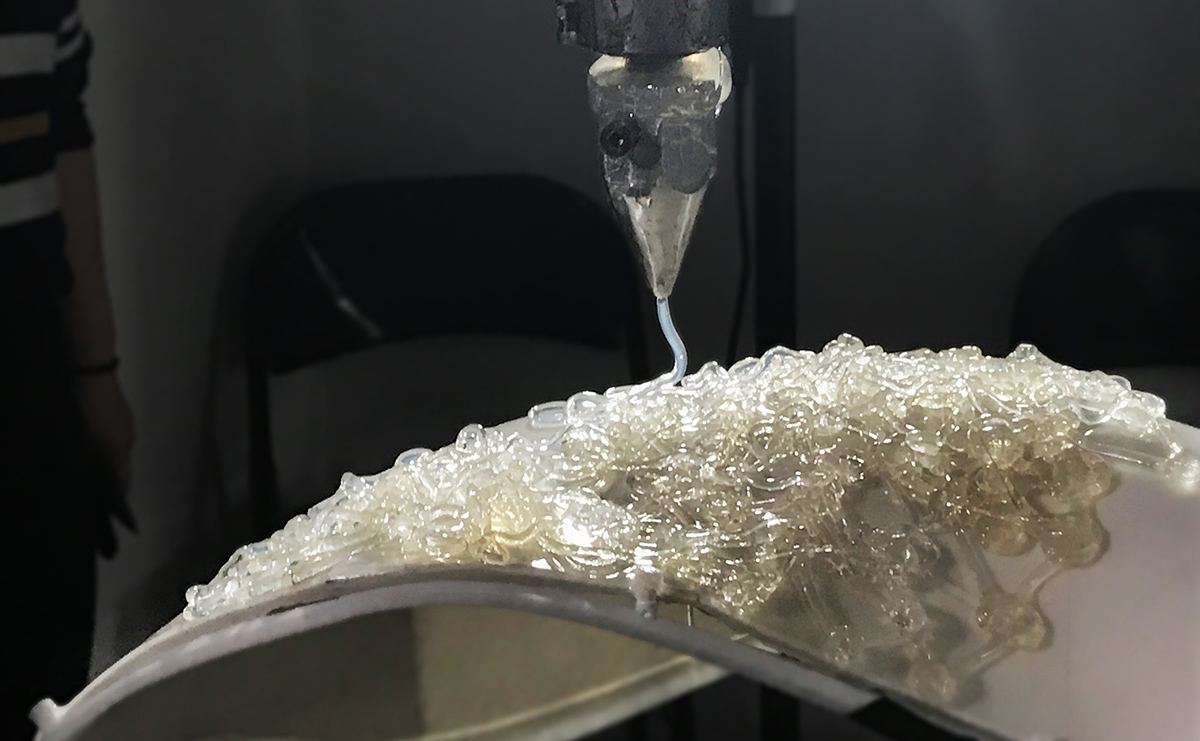


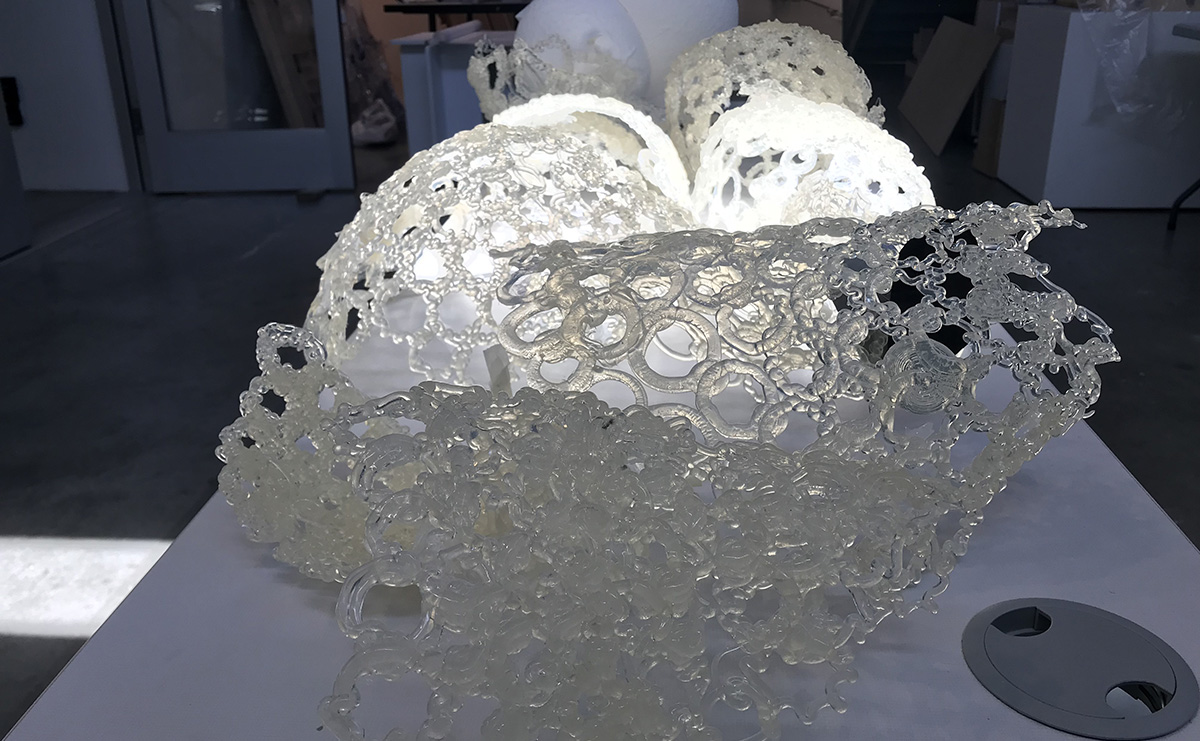
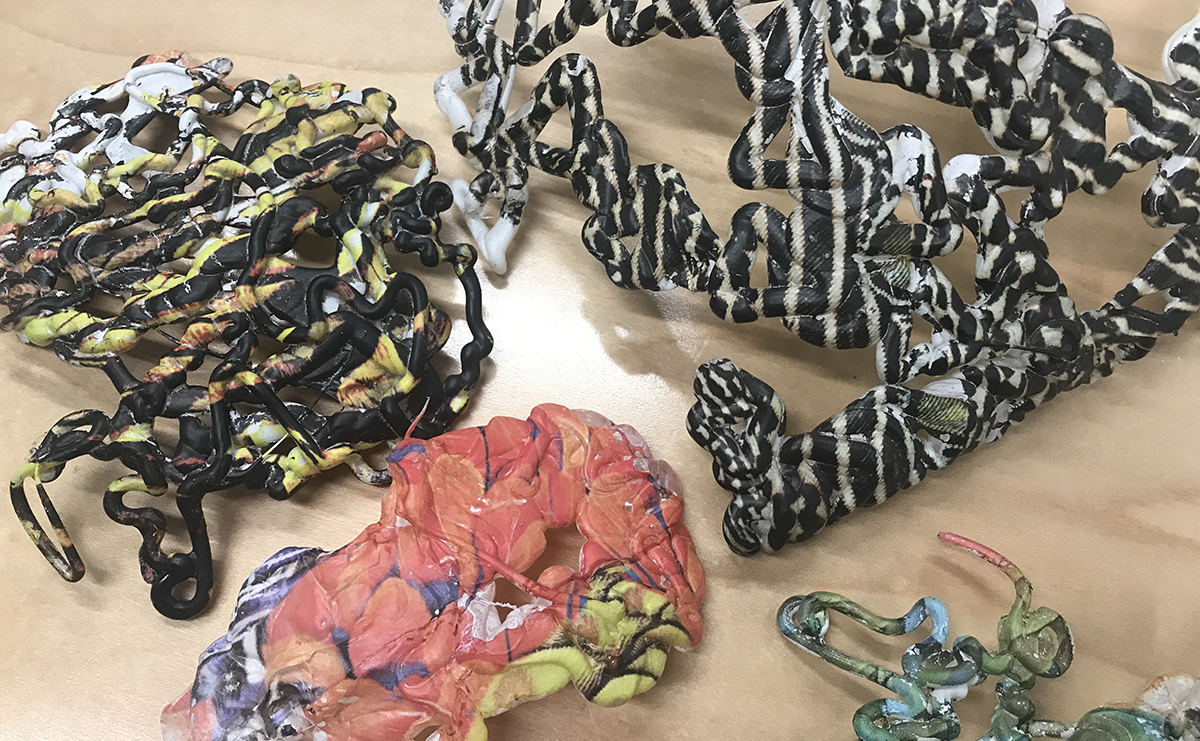
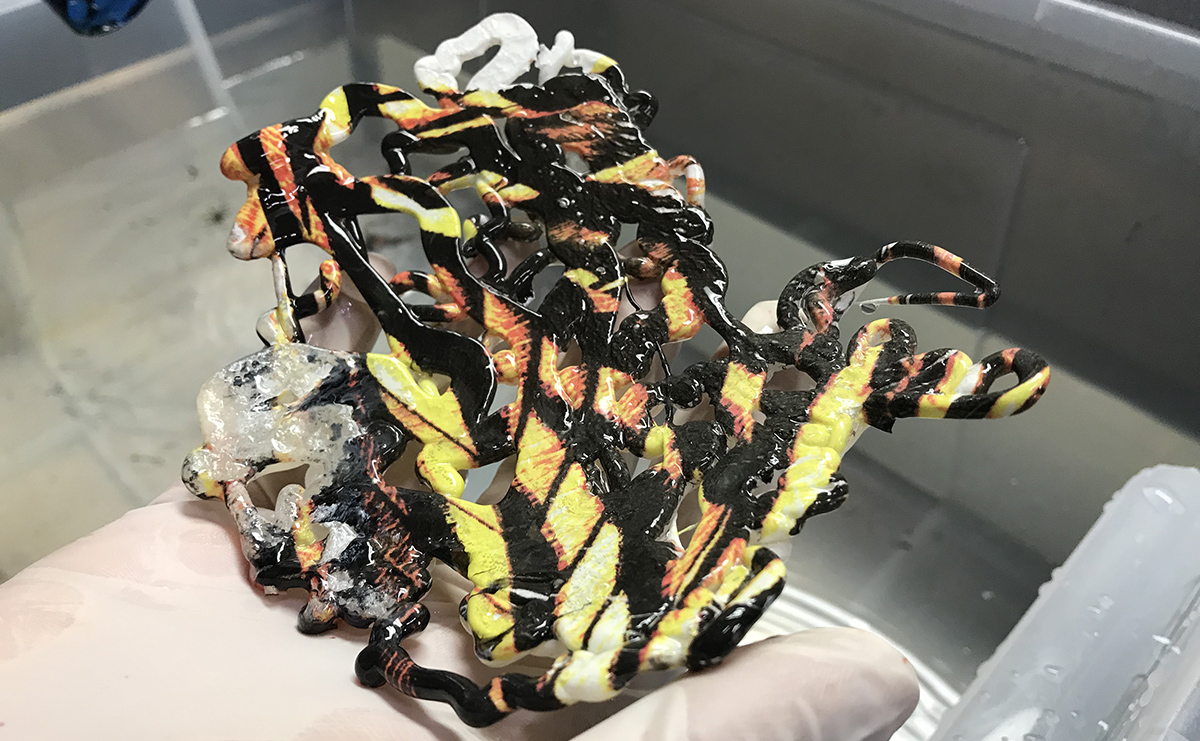
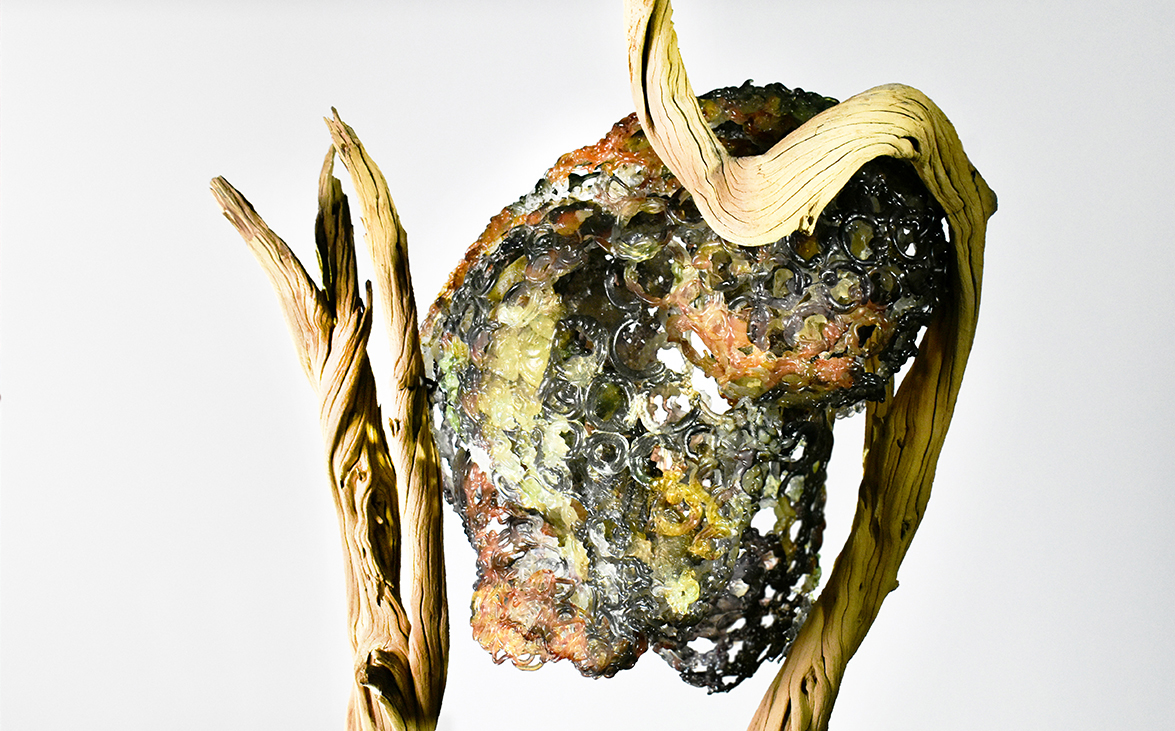
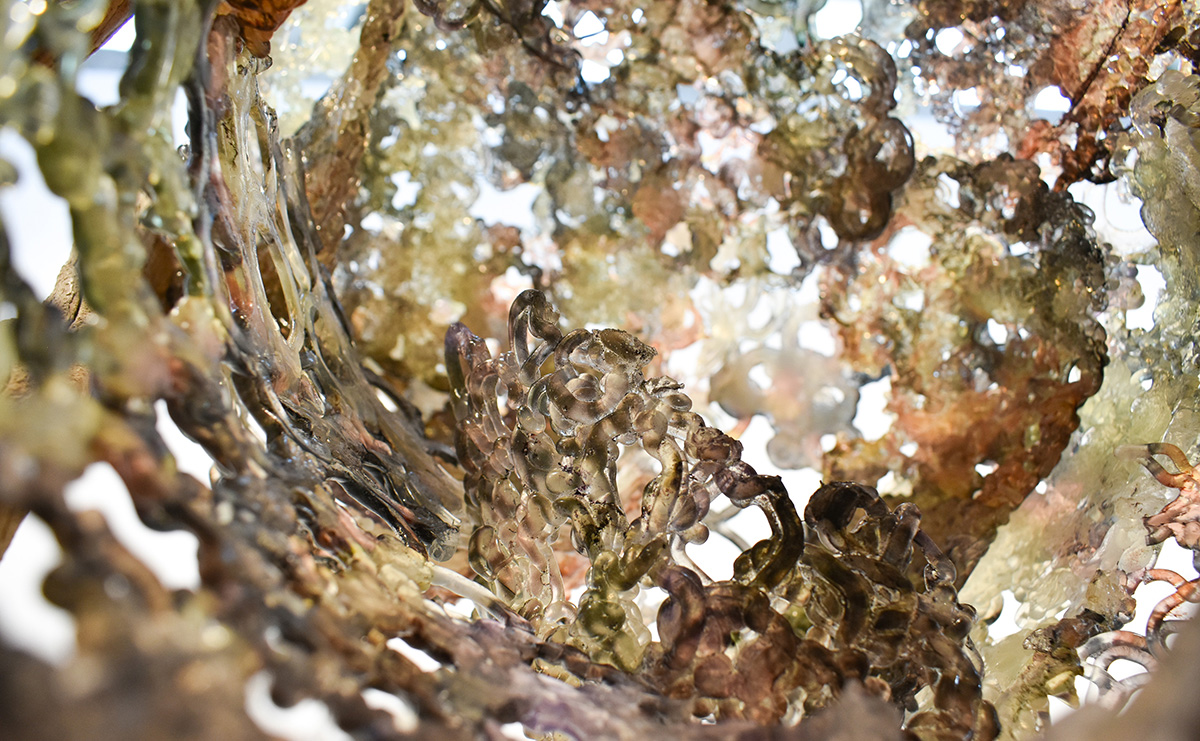

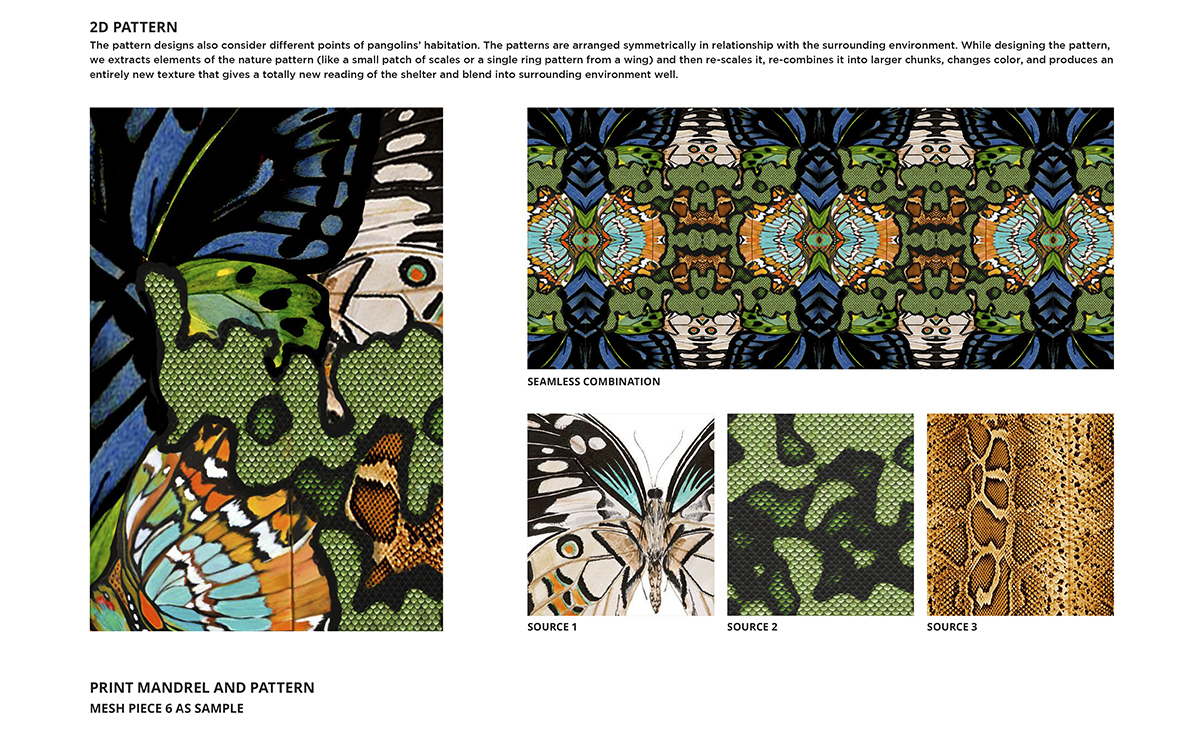

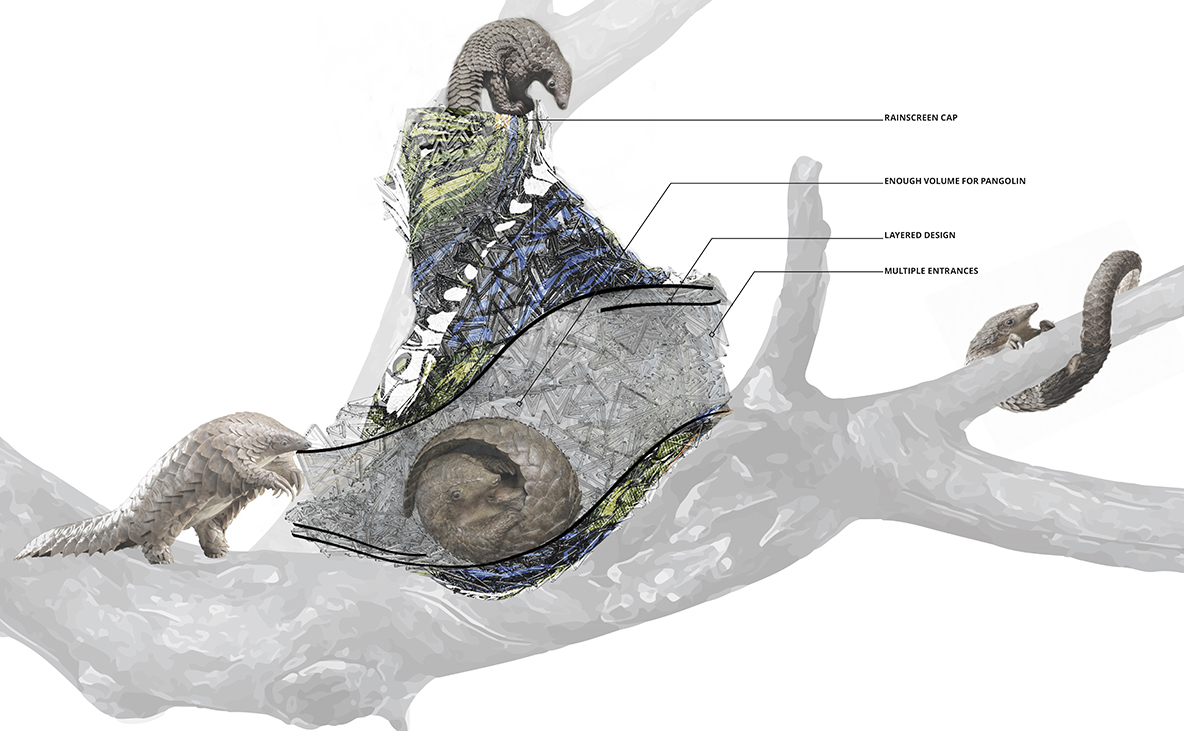
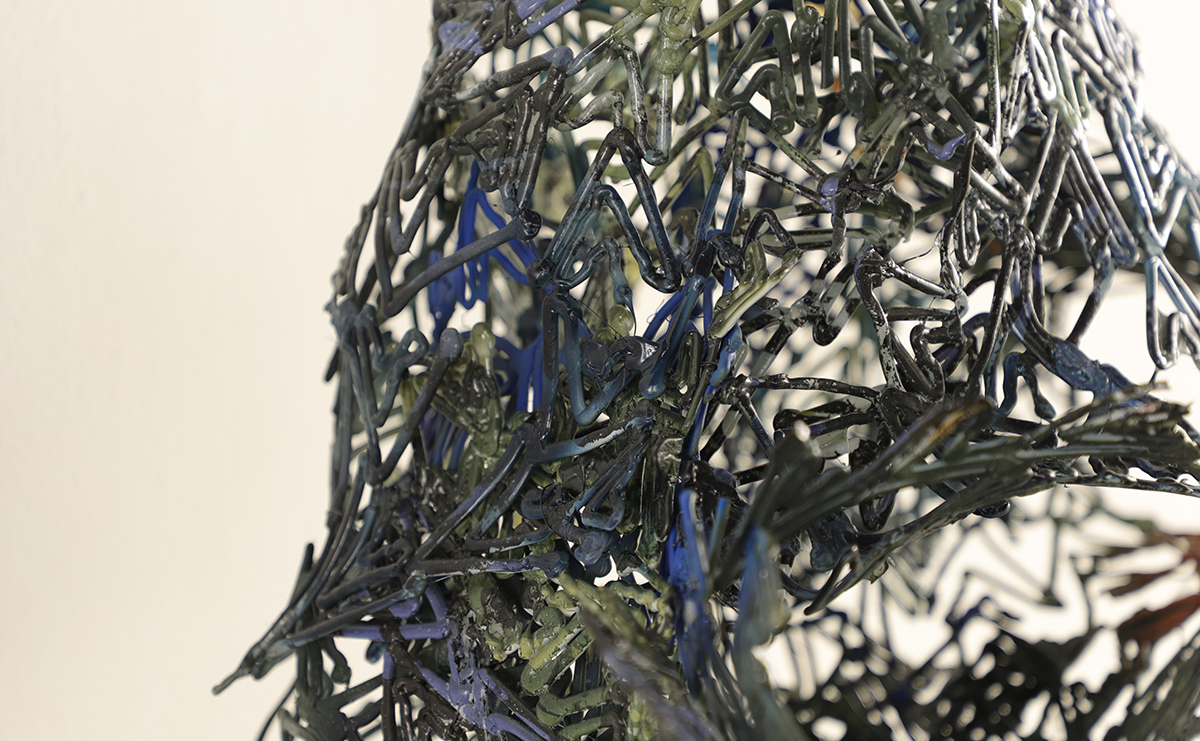
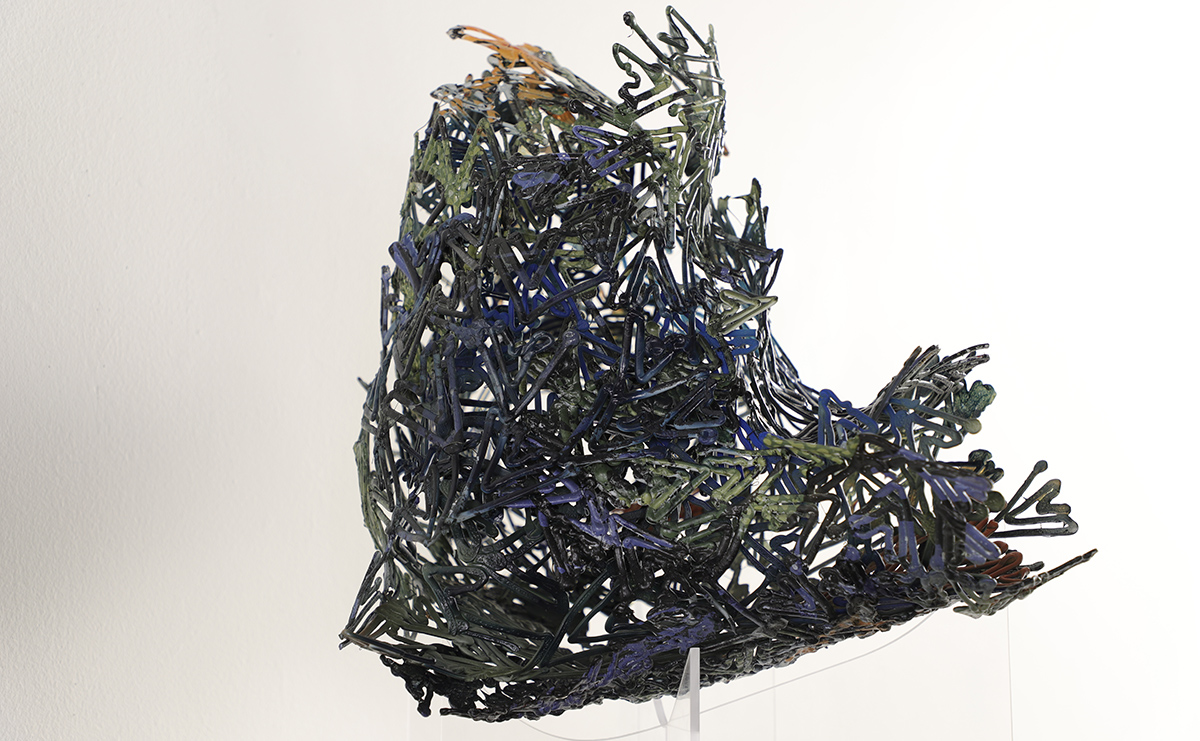
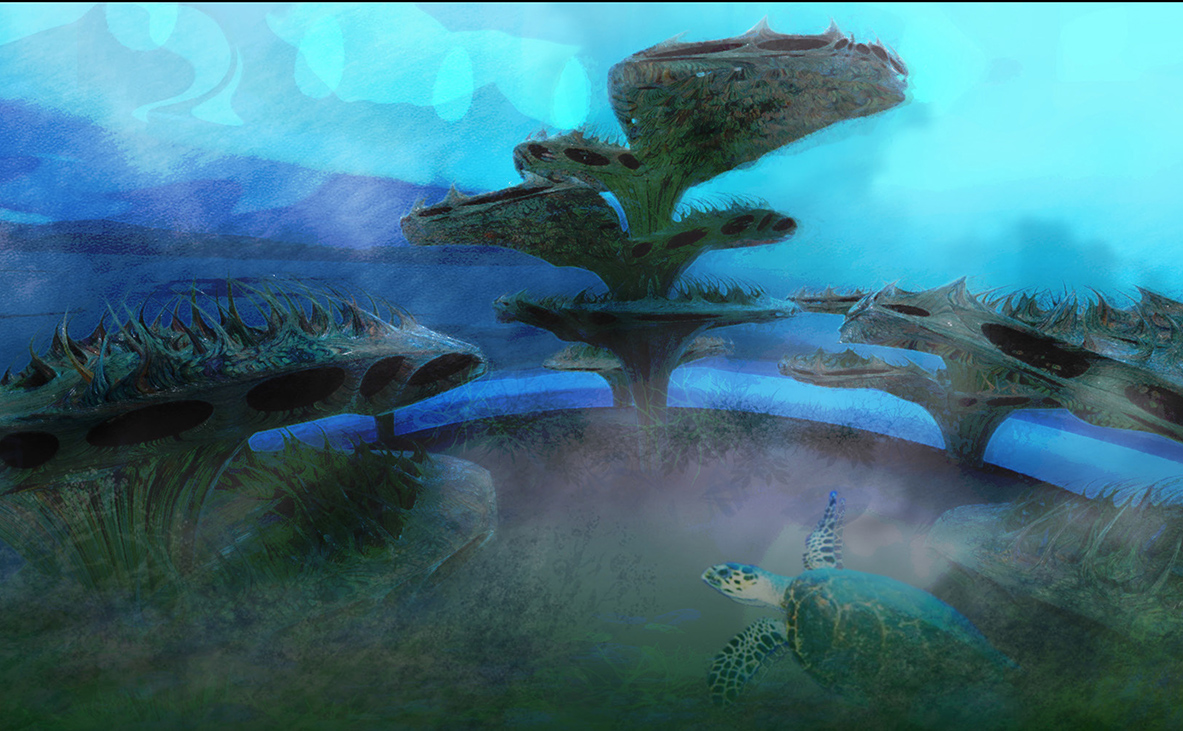
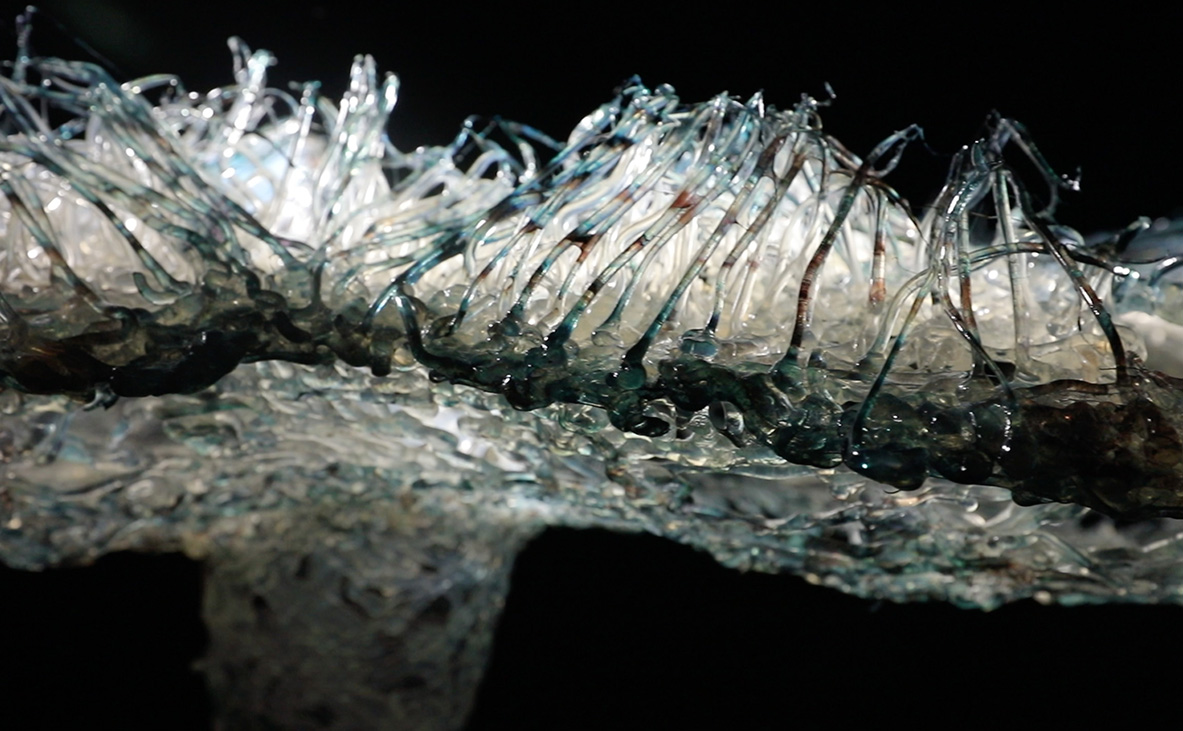
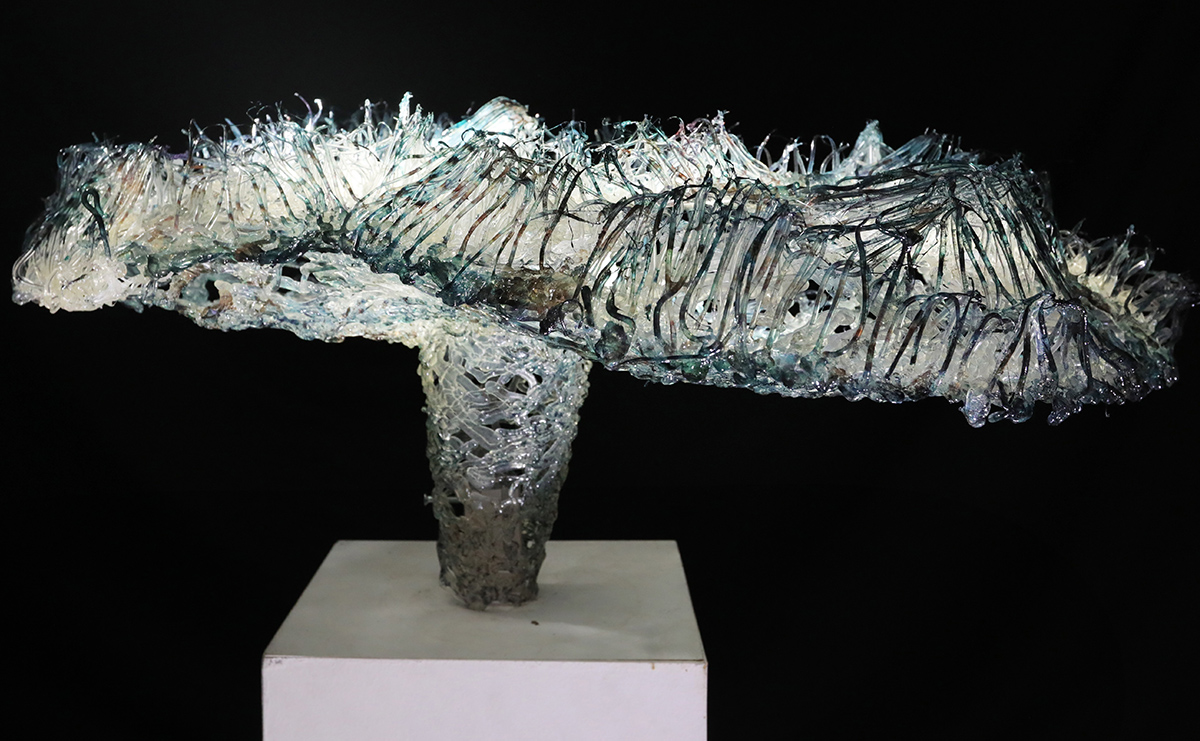
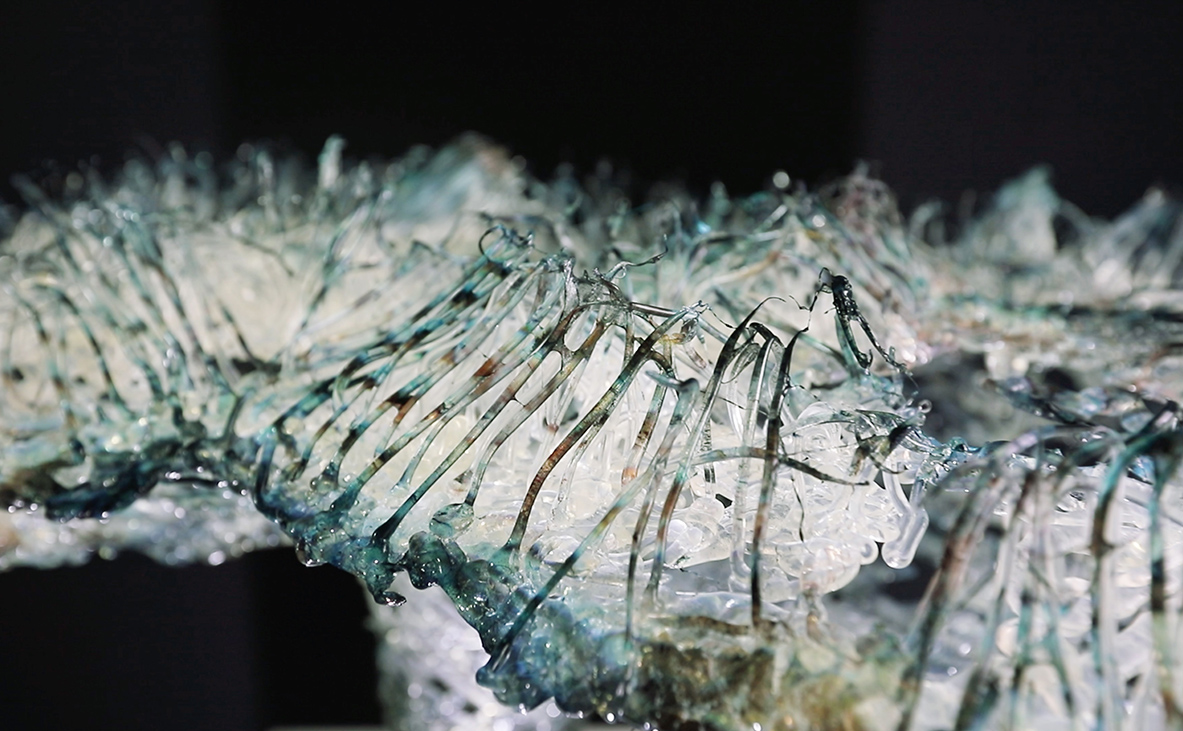

BACK TO TOP
